The Italian chameleon Romeo Castellucci is making his mark on the cultural autumn in Brussels. He is directing Mozart’s Die Zauberflöte, his third opera production at De Munt/La Monnaie; at Bozar, he is engaging in a dialogue with the forgotten Brussels Caravaggist Theodoor van Loon; for Kanal, he has put together a production that draws on his intimate bond with the city; and he has been given carte blanche by Cinematek for a film cycle.
It was at La Monnaie that Romeo Castellucci directed his first opera, Wagner’s Parsifal, in 2011. In 2014, he took on Gluck’s Orfeo ed Euridice, in which reality made an unexpected appearance in the form of images of a young mute woman in a hospital room. This year, the Italian artist delves into Mozart’s last work, Die Zauberflöte (The Magic Flute), which beneath the exotic and the magical, hides a dark heart. The director reveals that heart in a reinterpretation that resonates with our contemporary preoccupations without diminishing the emotional power of the music or the seriousness of the confrontation between Sarastro and the Queen of the Night. Romeo Castellucci’s Die Zauberflöte will also draw on daily life in Belgium today because, in the text and onstage, the perceptions and experiences of our fellow citizens echo those of Papageno and Papagena and all the other characters in the piece.
What drew you to Die Zauberflöte?
Romeo Castellucci: It was an idea that came to me while I was working on Requiem. A strange coincidence, because Mozart worked on the two works simultaneously. In Die Zauberflöte, you can make out, through all the optimism, fragments of the Requiem. It has arias that are so sad and so wonderful, but it also has a dark side. What’s more, it’s such an immense piece, which is more than a work of music. It’s a real part of human culture. It’s a unique meeting of culture and history that correlates with the French Revolution. A moment when everything changed with the promise of a new life, a new time of love, justice, and beauty. But the promise was not kept. It was engulfed by the Terror.
You have often said that you cannot have art without scandal. What is the scandal of your adaptation of Die Zauberflöte?
Castellucci: Scandal is something quite intimate. It doesn’t belong to the artist, but to each spectator. Everyone has their own version of a scandal which, to me, is an extremely positive word. It has nothing to do with provocation, which is a publicity technique. Scandal is a very profound and spiritual affair. I hope there will be scandals.
Die Zauberflöte is a masterpiece that shines eternally. We have kept that beauty, but you also have to look at a work from different angles to see what lies beneath and behind it
Scandal aside, approaching opera as an outsider, do you bend the rules?
Castellucci: What I hate in the theatre is recognising what I already know. Some audience members find a kind of somewhat bourgeois reassurance in this, flattering themselves that, because they are educated, they can recognise and understand what they are being shown. That really has little to do with the essence of a piece.
I see directing as a way of awakening something profound. You can’t get inside a piece by breaking in; you have to approach it as someone who knows how to unlock it. You have to penetrate the inner nature of an opera, connect and disconnect what runs through the piece. Otherwise, everything is doomed to be superficial, two-dimensional, and illustrative.
One of your most radical changes is that you made a lot of cuts and modifications to the narrative and the libretto.
Castellucci: I inserted another text. It is a radical change, but it’s coherent with the dramaturgy of the piece. The text was written by my sister, Claudia Castellucci, with whom I have collaborated for a long time. She also wrote the text of La Vita Nuova, which will be presented at Kanal. The text is based on the experiences and stories of the people of Brussels, Ghent, Bruges, and other cities, who appear as characters who come to visit Die Zauberflöte. Through them, we discover this incredible work.
How did you work on the timescale?
Castellucci: I worked on the two acts, accentuating the differences between them. The first act is a kind of mechanism that draws on the symmetry that permeates this opera from start to finish. You could say that everything is mirrored by its opposite. Papageno and Papagena, Tamino and Pamina, the Queen of the Night and Sarastro. In the first act, I accentuated this symmetry, which also amplifies this mechanism and the moments of wonder. But those moments of wonder are also a trap when you consider the extremely charged ideological subtext of this piece.
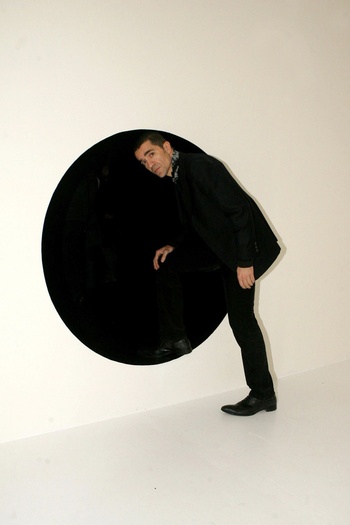
© LRavaglia
| Romeo Castellucci: Head first into Mozart's heart of darkness
What does the subtext tell us?
Castellucci: Die Zauberflöte is a metaphor for power. Sarastro is the master of light and reason. He has slaves, he is an incredible misogynist, and he kidnapped the daughter of the Queen of the Night: a combination of characteristics that is morally unacceptable. After the French Revolution, people saw that the Light had become the Terror. What does purity mean in Sarastro’s world? His light is radioactive; it’s a light that burns. It’s impossible to live in Sarastro’s world without darkness. It’s an idealised world in which there is no life because he wants to eradicate the feminine. Throughout history, there have been other periods in which purity has become a standard in the name of which millions of people have been killed. Even today, we let people die in the name of purity. Die Zauberflöte is not a fairy tale; it’s far more complicated than that.
What about the second act?
Castellucci: We are in what looks like a waiting room. We don’t know what we are waiting for there. Promises? Sarastro, who is not coming? Goethe already understood this when, a few years after Mozart’s Die Zauberflöte, he wrote another very pessimistic story denouncing Sarastro’s lies. He never found a composer, so it remained in the form of a libretto. No promises are kept, they are only words. There is no light without shade. Die Zauberflöte is a masterpiece that shines eternally. We have kept that beauty, but you also have to look at a work from different angles to see what lies beneath and behind it. In doing so, we go beyond the clichés attached to Die Zauberflöte when, in fact, Sarastro’s optimism is unacceptable.
How did you work with the actors, was there anything in particular that you asked of them?
Castellucci: In the first act, I asked them to learn very coded movements, which was not simple. The cast was very open-minded. On a personal level, they were open to working with non-professionals, who have a very important place in this production. The singers understood the concept, with these people’s experiences reflected in those of the spectator. It was also a very productive collaboration with the conductor Antonello Manacorda. We worked together from the beginning. With a project like this, you have to be united.
What does Brussels represent for you?
Castellucci: Brussels is like a family. I have friends there, I can dare to do things. Creatively, it’s a much more open and courageous place, in terms of the audiences as much as within the artistic world. Given the size of the country, the number and quality of artistic offerings in Belgium, in all fields, is a miracle. If you want to know what’s going on in art today, you have to visit Belgium. That’s not flattery – I would say it anywhere.
AN ARTIST IN THE CITY
After his sell-out performances of Die Zauberflöte, Romeo Castellucci is not done with the arts or with Brussels. At Bozar, in conjunction with an exhibition on Theodoor van Loon, a forgotten baroque painter of the seventeenth century, he will present History of Oil Painting. In this installation, a reflection on one of the essential elements of Baroque painting, form, or more precisely, drapery, the Italian artist creates a sacred space in a room of the museum, at the centre of which sits a profane relic. “The museum was a very important place in my artistic training. For me, it’s a spiritual place, in which forms have a spirit.” For Kanal, he has created a show that is intimately connected to the site and to the city. In a car park, in a dusty garage, among vehicles under coverings, is a small band of men. They are brothers and they are trying to envision a new life. “To envision this new life, I worked on spatial memory and with the inhabitants of Brussels. The city is a place of change that holds the spark of something new.” Cinema has always been a source of inspiration for Castellucci. He will pay homage to its creative power in the new series Sweet 16, for which he has drawn on 16 mm films from the collections of Cinematek to create an intuitive mosaic of sequences.
> Die Zauberflöte. 18/9 > 4/10, De Munt/La Monnaie
> History of Oil Painting. 10/10 > 13/1, Bozar
> La Vita Nuova. 28 > 30/11, Kanal – Centre Pompidou
> Sweet 16: Romeo Castellucci. 24/11, 17.00
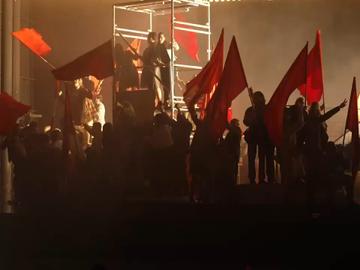
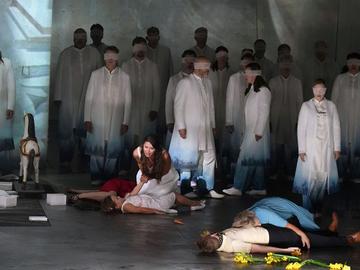
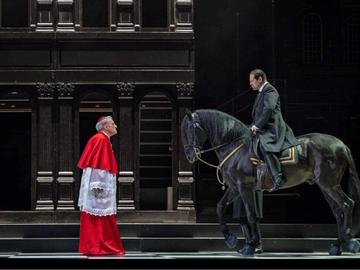
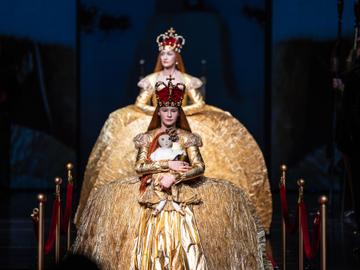
Fijn dat je wil reageren. Wie reageert, gaat akkoord met onze huisregels. Hoe reageren via Disqus? Een woordje uitleg.